DO NOT ATTEMPT YOUR OWN TESTING- INJURY OR ELECTROCUTION FROM RF EMF EMR |
IN ANY OF IT'S HIDDEN FORMS MAY BE AN UNINTENDED EXPOSURE FOR YOU: SEE CAUTIONS |
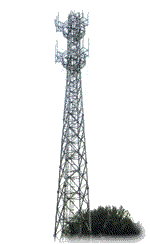
|
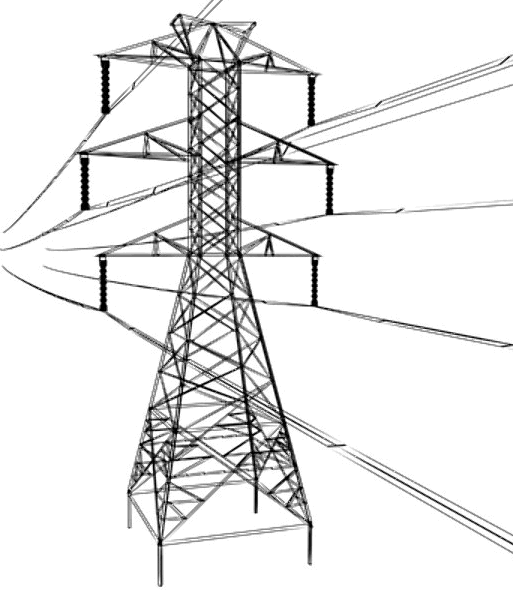 |
|
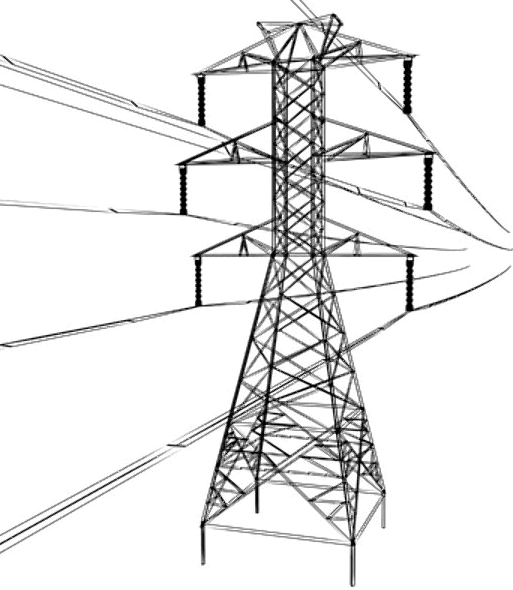 |
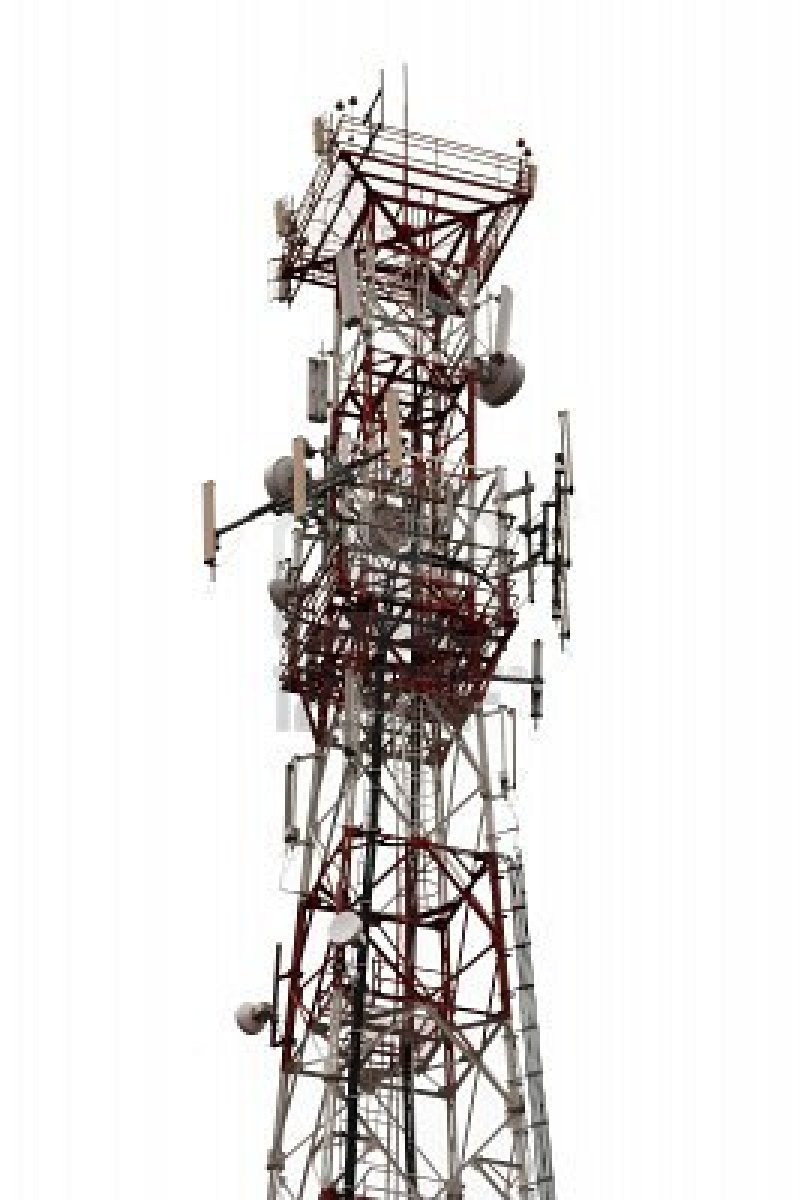 |
|||
United Nations' World Health Organization's (WHO) page on the risks related to EMF EMR. (NOTE: THERE IS A SIGNIFIGANT MATERIAL TECHNICAL ERROR ON THIS UN WHO PAGE REGARDNG EMF/EMR-WE WILL NOT REPORT IT - MAYBE YOU CAN IDENTIFY IT?)
Even the 2012 BioInititive study does not fully address all the risks at this time.
We perform health exposure testing for a HV RF EMF/EMR RISK presence and intensity to determine and document the levels within your habitation or surrounding outdoor areas during and with our full indoor human habitation health risk study. Each case is VERY different. Often we identify other major risks during our highly integrated subClinical Investigations®. Call for a free consultation.
Some additional links from authoritative state and government sources in the United States:
- Electric and Magnetic Fields: National Institutes of Environmental Health Sciences
- Health Risks Associated With Living Near High Voltage Power Lines: Health Physics Society (July 2008)
- Electric and Magnetic Fields (EMF): Health Concerns: Connecticut Department of Public Health (April 2008)
- Electric and Magnetic Fields (EMF) Radiation From Power Lines: U.S. Environmental Protection Agency (May 2006)
- Electromagnetic Fields and Public Health: World Health Organization (May 2006)
- Magnetic Fields Exposure and Cancer: Questions and Answers: National Cancer Institute, U.S. National Institutes of Health (NIH) (April 2005)
- Electromagnetic Fields Explained: Arizona Association of Realtors (2003)
- Power Line Fields and Public Health: American Physical Society (1995)
The Formula for the Root Effect of EMR Frequencies
Wavelength = Speed of Light / Frequency
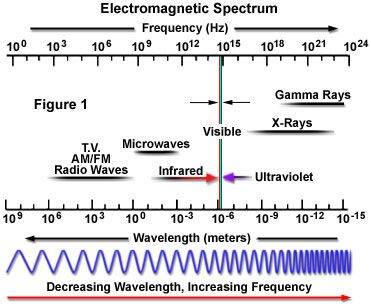
and the Effect of Electro Magnetic Fields (EMF) upon Human Health
FOR EMF INVESTIGATIONS CALL
973-726-9559
In a 1992 the U.S. Department of Environmental Protection (EPA) report indicated that everyone is exposed to a complex mix of electromagnetic fields (EMF) of different frequencies that permeate our environment. Exposures to many EMF frequencies are increasing significantly as technology advances unabated and new applications are found.
While the enormous benefits of using electricity in everyday life and health care are unquestioned, during the past 20 years the general public has become increasingly concerned about potential adverse health effects of exposure to electric and magnetic fields at extremely low frequencies (ELF). Such exposures arise mainly from the transmission and use of electrical energy at the power frequencies of 50/60 Hz.
The World Health Organization (WHO) is addressing the associated health issues through the International Electromagnetic Fields Project. Any health consequence needs to be clearly identified and appropriate mitigation steps taken if deemed necessary. Present research results are often contradictory. This adds to public concern, confusion and lack of confidence that supportable conclusions about safety can be reached.
The purpose of this Fact Sheet is to provide information about ELF field exposure and its possible impacts on health within the community and the workplace. Information comes from a WHO presentation and review of this subject and other recent reviews by eminent authorities.
ELF electric and magnetic fields
Electromagnetic fields consist of electric (E) and magnetic (H) waves traveling together as shown in the diagram below. They travel at the speed of light and are characterized by frequency and a wavelength. The frequency is simply the number of oscillations in the wave per unit time, measured in units of hertz (1 Hz = 1 cycle per second), and the wavelength is the distance traveled by the wave in one oscillation (or cycle).
ELF fields are defined as those having frequencies up to 300 Hz. At frequencies this low, the wavelengths in air are very long (6000 km at 50 Hz and 5000 km at 60 Hz), and, in practical situations, the electric and magnetic fields act independently of one another and are measured separately.
Electric fields arise from electric charges. They govern the motion of other charges situated in them. Their strength is measured in units of volt per meter (V/m), or kilovolt per meter(kV/m). When charges accumulate on an object they create a tendency for like or opposite charges to be repelled or attracted, respectively. The strength of that tendency is characterized by the voltage and is measured in units of volt, (V). Any device connected to an electrical outlet, even if the device is not switched on, will have an associated electric field that is proportional to the voltage of the source to which it is connected. Electric fields are strongest close the device and diminish with distance. Common materials, such as wood and metal, shield against them.
Magnetic fields arise from the motion of electric charges, i.e. a current. They govern the motion of moving charges. Their strength is measured in units of ampere per meter (A/m) but is usually expressed in terms of the corresponding magnetic induction measured in units of tesla, (T), millitesla (mT) or microtesla (µT). In some countries another unit called the gauss, (G), is commonly used for measuring magnetic induction (10,000 G = 1 T, 1 G = 100 µT, 1 mT = 10 G, 1 µT = 10 mG). Any device connected to an electrical outlet, when the device is switched on and a current is flowing, will have an associated magnetic field that is proportional to the current drawn from the source to which it is connected. Magnetic fields are strongest close to the device and diminish with distance. They are not shielded by most common materials, and pass easily through them.
Sources
Naturally occurring 50/60 Hz electric and magnetic field levels are extremely low; of the order of 0.0001 V/m, and 0.00001 µT respectively. Human exposure to ELF fields is primarily associated with the generation, transmission and use of electrical energy. Sources and typical upper limits of ELF fields found in the community, home and workplace are given below.
Community: Electrical energy from generating stations is distributed to communities via high voltage transmission lines. Transformers are used to lower the voltage for connections to residential distribution lines that deliver the energy to homes. Electric and magnetic fields underneath overhead transmission lines may be as high as 12 kV/m and 30 µT respectively. Around generating stations and substations, electric fields up to 16 kV/m and magnetic fields up to 270 µT may be found.
Home: Electric and magnetic fields in homes depend on many factors, including the distance from local power lines, the number and type of electrical appliances in use in the home, and the configuration and position of household electrical wiring. Electric fields around most household appliances and equipment typically do not exceed 500 V/m and magnetic fields typically do not exceed 150 µT. In both cases, field levels may be substantially greater at small distances but they do decrease rapidly with distance.
Workplace: Electric and magnetic fields exist around electrical equipment and wiring throughout industry. Workers who maintain transmission and distribution lines may be exposed to very large electric and magnetic fields. Within generating stations and substations electric fields in excess of 25 kV/m and magnetic fields in excess of 2 mT may be found. Welders can be subjected to magnetic field exposures as high as 130 mT. Near induction furnaces and industrial electrolytic cells magnetic fields can be as high as 50 mT. Office workers are exposed to very much smaller fields when using equipment such as photocopying machines and video display terminals.
Health effects
The only practical way that ELF fields interact with living tissues is by inducing electric fields and currents in them. However, the magnitude of these induced currents from exposure to ELF fields at levels normally found in our environment, is less than the currents occurring naturally in the body.
Electric Field Studies: Available evidence suggests that, apart from stimulation arising from electric charge induced on the surface of the body, the effects of exposures of up to 20 kV/m are few and innocuous. Electric fields have not been shown to have any effect on reproduction or development in animals at strengths over 100 kV/m.
Magnetic Field Studies: There is little confirmed experimental evidence that ELF magnetic fields can affect human physiology and behavior at field strengths found in the home or environment. Exposure of volunteers for several hours to ELF fields up to 5 mT had little effect on a number of clinical and physiological tests, including blood changes, ECG, heart rate, blood pressure, and body temperature.
Melatonin: Some investigators have reported that ELF field exposure may suppress secretion of melatonin, a hormone connected with our day-night rhythms. It has been suggested that melatonin might be protective against breast cancer so that such suppression might contribute to an increased incidence of breast cancer already initiated by other agents. While there is some evidence for melatonin effects in laboratory animals, volunteer studies have not confirmed such changes in humans.
Cancer: There is no convincing evidence that exposure to ELF fields causes direct damage to biological molecules, including DNA. It is thus unlikely that they could initiate the process of carcinogenesis. However, studies are still underway to determine if ELF exposure can influence cancer promotion or co-promotion. Recent animal studies have not found evidence that ELF field exposure affects cancer incidence.
Epidemiological Studies: In 1979 Wertheimer and Leeper reported an association between childhood leukemia and certain features of the wiring connecting their homes to the electrical distribution lines. Since then, a large number of studies have been conducted to follow up this important result. Analysis of these papers by the US National Academy of Sciences in 1996 suggested that residence near power lines was associated with an elevated risk of childhood leukemia (relative risk RR=1.5), but not with other cancers. A similar association between cancer and residential exposure of adults was not seen from these studies.
Many studies published during the last decade on occupational exposure to ELF fields have exhibited a number of inconsistencies. They suggest there may be a small elevation in the risk of leukemia among electrical workers. However, confounding factors, such as possible exposures to chemicals in the work environment, have not been adequately taken into account in many of them. Assessment of ELF field exposure has not correlated well with the cancer risk among exposed subjects. Therefore, a cause-and-effect link between ELF field exposure and cancer has not been confirmed.
NIEHS Panel: The US National Institute of Environmental Health Sciences (NIEHS) has completed its 5-year RAPID Program.The RAPID Program replicated and extended studies reporting effects with possible health implications, and conducted further studies to determine if indeed there was any health consequence from ELF field exposure. In June 1998, NIEHS convened an international Working Group to review the research results. NIEHS's international panel concluded, using criteria established by the International Agency for Research on Cancer (IARC), that ELF fields should be considered as a "possible human carcinogen".
"Possible human carcinogen" is the weakest of three categories ("possibly carcinogenic to humans", "probably carcinogenic to humans" and "is carcinogenic to humans") used by IARC to classify scientific evidence on potential carcinogens. IARC has two further classifications of scientific evidence: "is not classifiable" and "is probably not carcinogenic to humans", but the NIEHS Working Group considered there was enough evidence to eliminate these categories.
"Possible human carcinogen" is a classification used to denote an agent for which there is limited evidence of carcinogenicity in humans and less than sufficient evidence for carcinogenicity in experimental animals. Thus the classification is based on the strength of scientific evidence, not on the strength of carcinogenicity or risk of cancer from the agent. Thus, "possible human carcinogen" means limited credible evidence exists suggesting that exposure to ELF fields may cause cancer. While it cannot be excluded that ELF field exposure causes cancer from available evidence, further focused, high quality research is now needed to resolve this issue.
The decision of the NIEHS Working Group was based mainly on the appearance of consistency in epidemiological studies suggesting residence near power lines resulted in an apparently higher risk of leukemia children. Support for this association was found in studies relating childhood leukemia incidence to proximity to power lines and to magnetic fields measured for 24 hours in homes. Furthermore, the Working Group also found limited evidence for an increased occurrence of chronic lymphocyte leukemia in the occupational setting.
International EMF Project
WHO's International EMF Project has been established to work towards resolving the health issues raised by EMF exposure. Scientific reviews have been conducted and gaps in knowledge identified. This has resulted in a research agenda for the next few years that will ensure better health risk assessments can be made. A formal task group meeting to assess the results is scheduled by IARC in 2001. WHO will then adopt IARC's conclusions and complete an assessment of non-cancer health risks in 2002.
International Standards
The International Commission on Non-Ionizing Radiation Protection (ICNIRP) has published guidelines on exposure limits for all EMF. The guidelines provide adequate protection against known health effects and those that can occur when touching charged objects in an external electric field. Limits of EMF exposure recommended in many countries are broadly similar to those of ICNIRP, which is a non-governmental organization (NGO) formally recognized by WHO and a full partner in the International EMF Project. It will reassess its guidelines once the EMF Project has completed new health risk assessments.
Protective Measures
Large conducting objects such as metal fences, barriers or similar metallic structures permanently installed near high voltage electrical transmission lines should be grounded. If such objects are not grounded, the power line can charge them to a sufficiently high voltage that a person who comes into close proximity or contact with the object can receive a startling and uncomfortable shock. A person may also receive such a shock when touching a car or bus parked under or very near high voltage power lines.
General public: Since current scientific information is only weakly suggestive and does not establish that exposure to ELF fields at levels normally encountered in our living environment might cause adverse health effects, there is no need for any specific protective measures for members of the general public. Where there are sources of high ELF field exposure, access by the public will generally be restricted by fences or barriers, so that no additional protective measures will be needed.
Workers: Protection from 50/60 Hz electric field exposure can be relatively easily achieved using shielding materials. This is only necessary for workers in very high field areas. More commonly, where electric fields are very large, access of personnel is restricted. There is no practical, economical way to shield against ELF magnetic fields. Where magnetic fields are very strong the only practical protective method available is to limit of personnel.
EMF Interference
Strong ELF fields cause electromagnetic interference (EMI) in cardiac pacemakers or other implanted electro medical devices .Individuals using these devices should contact their doctor to determine their susceptibility to these effects. WHO urges manufacturers of these devices to make them much less susceptible to EMI.
Office workers may see image movement on the screen of their computer terminal. If ELF magnetic fields around the terminal are greater than about 1 µT (10 mG) this can cause interference with the electrons producing the image on the screen. A simple solution to this problem is to relocate the computer to another part of the room where the magnetic fields are below 1 µT. These magnetic fields are found near cables that provide electric power to office or apartment buildings, or around transformers associated with power supplies to buildings. The fields from these sources are generally well below the levels that cause any health concern.
Noise, Ozone and Corona
Noise in the form of a buzzing or humming sound may be heard around electrical transformers or high voltage power lines producing corona (see below). While the noise may be annoying, there are no EMF health consequences associated with these sounds.
Electrical devices such as photocopiers or any device using a high voltage to function may produce ozone, a colorless gas having a pungent smell. Electrical discharges in the air convert oxygen molecules into ozone. While people may easily smell the ozone, the concentrations produced around photocopiers and similar devices are well below health standards.
Corona or electrical discharges into the air are produced around high voltage power lines. It is sometimes visible on a humid night or during rainfall and can produce noise and ozone. Both the noise levels and ozone concentrations around power lines have no health consequence.
What should be done while research continues?
One of the objectives of the International EMF Project is to help national authorities weigh the benefits of using EMF technology against the detriment should any adverse health effects be demonstrated, and decide what protective measures, if any, may be needed. It will take some years for the required research to be completed, evaluated and published by WHO. In the meantime, WHO recommends:
- Strict adherence to existing national or international safety standards: Such standards, based on current knowledge, are developed to protect everyone in the population.
- Simple protective measures: Fences or barriers around strong ELF sources help preclude unauthorized access to areas where national or international exposure limits may be exceeded.
- Consultation with local authorities and the public in sitting new power lines: Obviously power lines must be sited to provide power to consumers. Despite the fact that ELF field levels around transmission and distribution lines are not considered a health risk, sitting decisions are often required to take into account aesthetics and public sensibilities. Open communication and discussion between the electric power utility and the public during the planning stages can help create public understanding and greater acceptance of a new facility.
- An effective system of health information and communication among scientists, governments, industry and the public can help raise general awareness of programmers to deal with exposure to ELF fields and reduce any mistrust and fears
References for further reading
ICNIRP (1998) International Commission on Non-Ionizing Radiation Protection Guidelines for limiting exposure to time varying electric, magnetic and electromagnetic fields (up to 300 GHz). Health Physics 74(4), 494-522.
NIEHS (1998) Assessment of health effects from exposure to power-line frequency electric and magnetic fields. Portier CJ and Wolfe MS (eds) NIEHS Working Group Report, National Institute of Environmental Health Sciences of the National Institute of Health, Research Triangle Park, NC, USA, pp 523. Available from NIEHS
Repacholi M and Greenebaum B (1998) Interaction of static and extremely low frequency electric and magnetic fields with living systems: health effects and research needs. Bioelectromagnetics (In press). (Summary report of WHO scientific review meeting on static and ELF held in Bologna, 1997).
WHO (1997) WHO's Agenda for EMF Research. World Health Organization publication WHO/EHG/98.13, WHO Geneva. Also available on EMF web site
http://www.sdge.com/safety/emfLinks.shtml
http://www.who.int/docstore/peh-emf/publications/facts_press/fact_english.htm
http://www.who.int/mediacentre/factsheets/fs263/en/index.html



